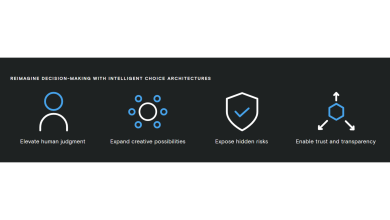
For defense contractors, government contracts now require more than technical expertise; they demand clear human-centered communication. In recent years, federal agencies have stepped up enforcement of plain language requirements. Bid proposals and technical documents must be clear, concise, and accessible to a wide audience.
The Plain Writing Act of 2010 was more than just a policy shift. It signaled that government communication must be easier to understand. The emphasis is now focused on removing jargon, reducing complexity, and making information easier to understand.
These expectations now extend to the companies working on large government contracts.
Whether submitting a proposal or delivering a project update, defense contractors are increasingly expected to meet the same plain language standards. In effect, clear writing has now become a contractual requirement.
At the same time, tools powered by generative AI – which can help simplify writing, streamline workflows, and maintain consistency – are now common across many sectors. However, in defense contracting, adoption has been slower, with risks often outweighing the rewards.
This raises an important question: how can defense contractors get the benefits of AI while at the same time safeguarding sensitive information? The answer lies in choosing tools designed specifically for their requirements; security, transparency, and built to meet government standards.
The key is choosing tools that are built for their world, secure, explainable, and designed with government-grade requirements in mind.
Why Plain Language Matters More Than Ever
Contracting officers within the U.S. government tasked with reviewing and evaluating contract bids are often working under extreme pressure to review submissions quickly and fairly. Most are frequently juggling multiple deliverables at any given time.
Dense, jargon-filled language, no matter how technically accurate, slows down the evaluation process and introduces unnecessary risk. With federal agencies increasingly prioritizing transparency and accessibility, plain language is now a key factor in securing high-value awards.
This means that submissions must do more than simply check compliance boxes. While submitting a compliant and compelling proposal remains essential, it also must be written in a way that is easy to comprehend for non-specialists. For defense contractors working with complex technologies and diverse teams of contributors, achieving this is no small challenge.
The AI Temptation and Its Risks
Generative AI tools like ChatGPT are everywhere. It is no surprise that proposal writers, engineers, and subject matter experts are experimenting with them to help simplify or refine complex drafts. To be fair, Generative AI can be beneficial under the right circumstances.
However, using public AI platforms, such as ChatGPT, to generate content for a government bid introduces significant risk.
- Public AI tools process data through shared models. Any information you enter is subject to the provider’s terms and conditions. Submitting sensitive data, proprietary specifications, or bid strategies into a publicly hosted AI tool could violate ITAR or export control laws.
- Generative outputs are often untraceable. If a proposal’s content is later challenged, there is no way to verify the source or logic behind AI-generated edits.
Due to these risks, many government contractors have issued internal policies prohibiting the use of public AI tools in proposal development.
That still leaves a gap.
How do teams meet readability and plain language requirements without exposing themselves to security threats?
This is where secure AI comes in: the next generation of AI-powered writing tools built specifically for high-stakes environments like defense and government contracting.
Unlike consumer-grade platforms, secure AI systems are designed with guardrails in place.
They deliver the speed and efficiency of AI while protecting sensitive information and meeting strict data security protocols. These systems operate within controlled environments, protect client data, and do not feed your content into public training models.
Secure AI tools can be tailored to the specific language, terminology, and technical precision required by aerospace and defense sectors. This ensures teams write more clearly while maintaining technical accuracy.
Every suggestion comes with context, allowing users to see exactly why a change is recommended and decide whether to apply it. Built-in reporting makes it easy to track readability scores and plain language compliance, from start to finish.
The result is a smarter, more secure way to work. Proposal and technical writers can focus on communicating clearly, confident that their content meets federal requirements without compromising security.
What Success Looks Like
For defense contractors adopting secure AI writing support, the impact is significant and measurable.
- Review cycles can be shortened by more than 60 hours per proposal. AI identifies issues early and provides targeted suggestions to improve the content.
- Evaluators engage with clear and consistent language. This often translates into higher win rates.
- Subject matter experts spend less time rewriting complex text. This gives them more time to focus on value and technical accuracy.
- Sensitive data remains protected. Secure AI operates within compliance boundaries, reducing the risk of leaks or regulatory issues.
In one recent case, a large defense contractor adopted secure AI to support its proposal process. As a result, the team reduced average review time by 66.7 hours and improved readability scores by more than 25 percent. Within a year, the company also saw a 9.8 percent increase in contract win rates.
Plain Language Is Not a Trend, It Is Policy
Regardless of changes in administrations, the U.S. government’s commitment to plain writing is here to stay. In fact, the Federal Plain Language Guidelines continue to evolve, with growing emphasis on eliminating jargon, using active voice, and making content accessible to multiple audiences, including veterans, procurement officers, and frontline operators.
Contractors who continue to rely on manual processes and siloed document reviews will find it increasingly difficult to meet these expectations consistently. While unsecured AI tools carry significant risk, the solution is not to avoid AI, but to adopt it carefully and responsibly.
Secure by Design, Readable by Default
AI will not replace human expertise, especially in defense, but it can augment and strengthen it. For writers, reviewers, and subject matter experts, secure AI provides the tools to communicate more clearly, more consistently, and more securely.
By adopting secure AI writing platforms that are built for security & compliance with federal requirements, defense contractors can meet the growing plain language mandate without compromising on accuracy, security, or quality. The end result: superior proposals, expedited reviews, and a stronger chance of mission success.



